Ours is an age of innovation. The worlds of business, education, medicine, and politics are all driven by the search for new ideas, products, technologies, and approaches. Our economic growth, educational success, health and well-being, and political future hinge on the progress that only innovation can generate and sustain. We are constantly being told that we must think outside the box in a never-ending quest for novelty and creativity. One need only think of the dramatic changes in social media over the past decade or so — with such enormous implications for how we communicate, purchase things, relate to others, vote, and view ourselves and the world we inhabit — to appreciate the power of innovation to shape our lives. Innovation is the key to human progress, while failure to innovate, it seems, leads to stagnation, decline, and, eventually, death.
As powerful as innovation is, it must contend with another strong force, that of tradition. The latter manifests itself in any number of social institutions, habits, practices, and intuitions that preserve the continuities, regularities, orthodoxies, and “permanent things” of human existence. Tradition speaks to those impulses that resist rapid change and innovation for innovation’s sake and that cherish nourishing connections with the past — the “mystic chords of memory” and ritual observances and sacred ceremonies that help make sense out of life. Tradition decries the shallow presentism and hubris that dismisses the accumulated wisdom of humanity.
It might seem, then, that innovation and tradition are incompatible: one the engine of change, the other the nexus of continuity. But such a binary understanding is far too simplistic. Upon closer examination, it is evident that innovation and tradition are inextricably linked. As Michael North suggests, newness is always circumscribed with the limits of the old. That is also the conclusion of a number of prominent scholars who have commented on the relationship of innovation and tradition.
For instance, the historian Eric Hobsbawm, the political philosopher Alasdair MacIntyre, the sociologist Edward Shils, and the historian of science Thomas Kuhn have advanced distinct understandings of tradition and innovation that, taken together, illustrate the ways in which the two concepts are linked. We might label Hobsbawm’s approach utilitarian, MacIntyre’s as emphasizing rational inquiry, Shils’s as capacious, and Kuhn’s as scientific.
In his introduction to a classic anthology, Hobsbawm advanced the notion of “invented tradition.” He contends that many practices, rules, and rituals generally considered to be “traditional” are often recent inventions that developed in response to novel situations. The concept is perhaps best illustrated in a memorable chapter by Hugh Trevor-Roper on the Scottish Highland tradition. Trevor-Roper argues that the kilt woven in a tartan is not an ancient “distinguishing badge of Highland society” but rather a relatively modern “retrospective invention” used to promote Scottish national identity.
In MacIntyre’s work, tradition is a central concept, though he has been criticized by some for failing to employ it with precision or even to define it. MacIntyre treats tradition in terms of rational inquiry, arguing that such inquiry always takes place against the backdrop of the shared assumptions, practices, and aims of particular intellectual community. And, like Hobsbawm, he also sees a close, if paradoxical relationship between tradition and innovation. Traditions of inquiry, MacIntyre maintains, are “defined retrospectively,” often as a result of confronting some challenge or novel circumstance. For example, the Tridentine Catholic theological tradition was formulated as a response to the challenge of the Protestant Reformation.
Shils holds to a more multifaceted — though no less paradoxical — view of tradition. His capacious approach locates tradition within the accumulated cultural production of the past, handed down by social institutions such as the family and church. Understood in this way, tradition winds up amounting to the sum total of human culture. What makes this inherently paradoxical is that many of the things being handed down as tradition were once associated with innovation or even the rejection of authority. Shils draws this tension out further by suggesting that there are traditions of inventiveness and originality whereby, as another writer put it, “even the most original work owes something to tradition.” Historians can trace the genealogy of these anti-traditional traditions retroactively, but they are generally not recognized as such when they first develop.
And then there is Thomas Kuhn. Best known for The Structure of Scientific Revolutions, Kuhn delivered a conference paper in 1959 that directly addresses our “big question.” The title, “The Essential Tension: Tradition and Innovation in Scientific Research,” conveys the crux of his argument: Both convergent and divergent thinking are needed for science to advance. But they are always in tension with each other. Normal scientific research is a highly convergent activity based on the “settled consensus” of the scientific community; divergence from the consensus is relatively rare, but it depends on extended periods of convergent research. The “ultimate effect” of “tradition-bound work,” Kuhn argues, “has invariably been to change the tradition.” Science must therefore be, simultaneously, both firmly traditionalist and innovative, at least potentially.
The views of these thinkers challenge the notion that innovation and tradition are incompatible. If Hobsbawm, MacIntyre, Shils, and Kuhn are right, innovation and tradition are, on the contrary, two sides of the same coin. Neither can be adequately understood in isolation. As analytical categories, they necessarily function in tandem.
That said, I question whether these are good analytical categories. My reservations about them stem from a lack of definitional precision. There really is no all-encompassing definition of tradition. As Wilfred M. McClay has noted, “tradition” has a “complicated lineage.” According to an old meaning of the word, “tradition” is negative, being related to surrender or betrayal: to hand over, so that handing over a person to authorities would be called an act of tradition. The more familiar meaning of “tradition” as handing [something] down has its own negative connotations: of limiting progress or of curbing human potential. Tradition in this sense is frequently invoked in Buckley-esque fashion as “stand[ing] athwart history, yelling Stop!” Another working definition might be: handing down some aspect of the past to serve as a guide to actions or policies in the present. While such definitions may work descriptively, they lack conceptual rigor.
Innovation is an even more imprecise term. It is generally applied today to whatever is new or different. But the implicit association of innovation with positive change is a relatively recent development. In its original Latin usage, to “innovate” was to renew or reform, not to start afresh. In fact, the words “innovation” and “novelty” were often considered pejorative until the nineteenth century; they connoted not just newness but pointless or even harmful newness. So, as is the case with tradition, we must rely upon working definitions. But how do we recognize something as a genuine innovation? How does innovation originate? How is it transmitted? How does it differ from mere change, invention, or incremental improvement? There are no clear answers. Moreover, the ubiquity of “innovation-speak” exacerbates the situation, prompting some to decry the “mindless celebration of novelty” and to question whether innovation has become such a cliché that it has lost all meaning.
Beyond definitional imprecision there are, for both of these concepts, even greater problems of under-theorization and conceptual murkiness. This is especially the case for innovation.
While there are many analyses of innovation in the context of business, there are very few comprehensive scholarly studies of the concept. The best to date is Michael North’s 2013 Novelty: A History of the New, which still falls short of being, in the author’s words, “a standard text or omnibus history.” North, a professor of English, makes the case that novelty has historically been construed as either recurrence (creating something new by the recurrence of something old) or recombination (combining existing elements into new patterns), or some combination of the two. He notes, however, that any concept of novelty faces a fundamental problem: It “depends on something prior, the very continuity it claims to violate.” Consequently, novelty borders on “ontological nonsense.” There is another problem with innovation: the concept is often employed teleologically, as fostering what historians would call a whiggish tendency to focus on whatever led to significant changes and undervalue those aspects of the past that did not yield innovational fruit.
Similarly, there are few comprehensive treatments of the concept of tradition, despite its wide general usage. And while several scholars — including those I have noted earlier as well as William F. Shuter (whose essay titled “Tradition as Rereading” in an obscure anthology I have found very helpful in preparing this essay) — have written perceptively about tradition, it remains under-theorized. Moreover, it is widely viewed with suspicion as an analytical category in the human sciences.
Clearly, much more work is needed to provide greater clarity and analytical rigor to these concepts. Unfortunately, there is very little recent scholarship devoted to the study of the interplay between tradition and innovation. A recent exception is the anthology Tradition as the Future of Innovation, which grew out of an international philosophical conference in Italy. It is too early, however, to tell if these preliminary discussions will spur further research.
We might wish for a grand theory of change in human history and society, one that adequately accounts for the “essential tension” of innovation and tradition. I must confess, however, that I am not optimistic that this is feasible. The drama of humanity, past and present, is far too complex; it defies theorization on such a scale. Context matters enormously, and no conceptual scheme can adequately encompass the sheer vastness and variety of contexts wherein tradition and innovation interact.
Should we therefore abandon the concepts of innovation and tradition? No. They have considerable heuristic value, even if they lack the conceptual rigor needed to use them as analytical categories. What is especially needed is more investigation of the specific contexts, past and present, in which there is evidence of significant change. I hasten to add (as I have noted elsewhere) that we must also complement these case studies with necessarily tentative explorations of broader patterns of activity. Today there is such an emphasis on complexity, especially among historians, that careful scholars often shun generalizations they fear sacrifice the specificity and complexity of history. But we should not let the demands of scholarly specialization — as important as they are — prevent us from advancing provisional hypotheses to account for such general historical patterns. So while a grand theory of change is likely beyond our reach, exciting work remains to be done. Studies on a variety of scales could be extremely important in helping us clarify what we mean by innovation and enabling us to better understand why innovation occurs, when and where it does, as well as the role that tradition may play in inhibiting or spurring innovation.
Discussion Questions:
- Is innovation overvalued as a concept?
- Does the concept of innovation have sufficient analytical explanatory power or is it simply a descriptive term?
- Is it possible to give a precise definition of “tradition”?
- Is it possible to formulate a grand theory of change in human society?
- Might an evolutionary account of human societies as incremental, gradual, spontaneous, and unplanned — such as the one offered by popular science journalist Matt Ridley — be an improvement over the innovation-tradition dynamic?
Discussion Summary
My essay on the interplay between innovation and tradition generated five responses. It is fair to say that none took exception to my basic contention that innovation and tradition are two sides of the same coin. Neither can be adequately understood in isolation. As analytical categories, they necessarily function in tandem.
The responses were basically of two kinds: those that suggested further examples to bolster my argument and those that asked questions of implication. I acknowledged the former and signaled that mine was not intended to be an exhaustive treatment of innovation and tradition. The latter type of comment enabled me to expand a bit on what I said in the online essay.
The question of why certain places and times seem to experience greater receptivity to innovation is an important one. I was able to make some fairly obvious points about how the mix between innovation and tradition has certainly not always been constant. Some societies have been much more open to innovation than others. And there are chronological periods when change definitely seems to be more in the air. The meatier question, of course, is: “Why is this so?” It gets us to the complexities of this question. What are the catalysts to novelty? I am unable at this point to suggest a short list that covers all contexts. But I’m inclined to look at such things as geography and geopolitical orientation (e.g., the cosmopolitan features of maritime powers versus the more regimented and authoritarian dimensions of continental powers than nature has not provided with easily defended borders); religious promptings for reformation and renewal; robust economic and scientific activity; “cultures of growth” (to borrow from Joel Mokyr); and societies and polities that emphasize individualism.
My response to a similar question enabled me to comment further that historians of my generation routinely viewed change and continuity as the warp and woof of history. But other than asserting that there always has been a dance between change and continuity or, if you will permit, innovation and tradition, historians have not reached anything remotely like consensus as to what fuels these forces. This should come as no surprise. The sheer complexity of change and continuity in particular historical instances is overwhelming.
This suggests, to my thinking, some directions for further inquiry into this topic. First, while we routinely employ the terms innovation and tradition, there is relatively little scholarship on them as concepts that can be used with analytical rigor. It is even more surprising, to me at least, that this is especially the case for innovation given its ubiquity in current discourse.
The absence of conceptual rigor makes it highly unlikely that we could advance a grand theory of change in human history and societies — one that adequately accounts for the “essential tension” of innovation and tradition. But we should work to that end. That will necessitate more investigations of the specific contexts, past and present, in which there is evidence of significant change. Some might say that this is precisely what most historians do routinely. But I am suggesting investigations that not only seek to understand the particular, but that also build on the insights gleaned from specific contexts to address the larger questions of what catalyzes change and what inhibits it. That means we — and here I’m thinking primarily of historians — need to do a much better job of suggesting large-scale patterns that offer provisional “answers” to such questions as the interplay between tradition and innovation. To do so is to engage in the kind of synthesis and generalization that specialists find problematic.
It is commonly assumed among academic historians that all historical situations possess an irreducible uniqueness. But, as I have argued elsewhere, we interrogate the past not only to examine the particulars of “this place” at “this time,” but also in part to determine whether patterns emerge that help us understand the past at larger scales of inquiry than individual case studies. When patterns emerge from careful scholarship, we ought not be shy to draw tentative conclusions and advance explanatory schemes that we can revise in the light of new data. As I said in my essay, surely we can do more than celebrate specificity and complexity. But to argue this goes against the grain of most current practice among academic historians.
This BQO exercise has challenged me to study further innovation and tradition with the goal of writing a book-length essay synthesizing their interplay throughout history and suggesting patterns that emerge. Given the enormous breadth of the topic, I will probably limit my thinking on innovation and tradition to Christian history.



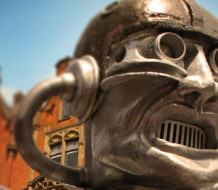
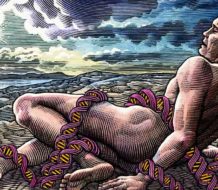
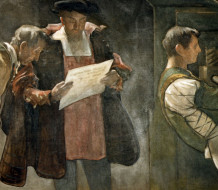
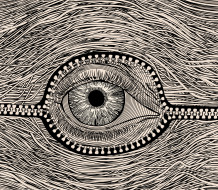
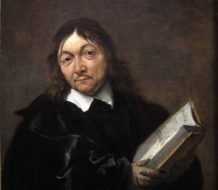


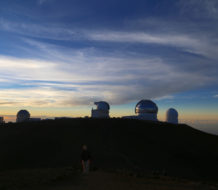

I’m surprised to see that Edmund Burke didn’t make your list of thinkers who have theorized about tradition. Another, lesser-known figure is Josef Pieper, who saw a tension between tradition-bound disciplines such as philosophy and the tradition-less disciplines of the natural sciences.
To what extent is this a New World v. Old World problem? Hasn’t American culture, arguably, been more hospitable to innovation than, say, those of European countries, where tradition is more pronounced (at least in recent memory)?
I think this is partly a political question. That is, certain political climates can stifle innovation (or tradition) more than others. The hard thing is to strike a good balance.
R. Marion is correct. Certainly both Burke and Pieper wrote eloquently about tradition, as have others such as Jaroslav Pelikan. In a brief essay designed to generate conversation, it was neither possible nor desirable to be exhaustive.
The issue of regional, as well as temporal, receptivity to innovation is an important one. The mix between innovation and tradition has certainly not always been constant. Some societies have been much more open to innovation than others. And there are chronological periods when change definitely seems to be more in the air. Why this is so gets us to the complexities of this question. Is there a single catalyst to novelty? I doubt it. But surely there are contributing factors that can be advanced. For instance, I’m inclined to look at such things as geography and geopolitical orientation (e.g., the cosmopolitan features of maritime powers versus the more regimented and authoritarian dimensions of continental powers than nature has not provided with easily defended borders), religious promptings for reformation and renewal, robust economic and scientific activity, “cultures of growth” (to borrow from Joel Mokyr), societies that emphasize individualism, etc.? So to Jaron Davies’s point, yes, I agree that American culture on the whole has been more receptive to innovation. But that has by no means been uniform throughout our history. I strongly suspect closer examination would show considerable regional and cultural differences within the American experience.
Indeed, Sarah Drossle’s comment about political climates is well taken. The question I would ask, then, is: How is it that these political climates come about?
It was almost a cliche among historians of my generation (undergrad/graduate work in the 1960s and 70s) that change and continuity were the warp and woof of history. Change, of course, attracts more attention, and it is probably easier to research. But other than asserting that there always has been a dance between change and continuity or, if you will permit, innovation and tradition, historians have not reached anything remotely like consensus on what fuels these forces. This should come as no surprise. The sheer complexity of change and continuity in particular historical instances is overwhelming. That said, I think we might do a better job at suggesting large-scale patterns that attempt to provide provisional “answers” to such questions as the interplay between tradition and innovation. To do so is to engage in the kind of synthesis and generalization that specialists find problematic. But surely we can do more than celebrate complexity.
Professor,
Are you familiar with Jean Gimpel’s The Medieval Machine about the impressive array of inventions and technological breakthroughs that arose in the Middle Ages (traditional by any meaningful definition)? It’s a great corrective to the popular notion of a “dark age” characterized by stasis or even regression. I would imagine his book might underscore your thesis.
Marie, Thank you for alerting me to Gimpel’s Medieval Machine. I have not seen it, and I am grateful for the suggestion. It does seem to confirm not only my point but also the trajectory of medieval historiography of the past several decades. Back in the mid-60s Lynn White wrote persuasively about “the effects of technological innovation on the societies of medieval Europe” in his Medieval Technology and Social Change.
I will look for his work.
Thanks!
And I have ordered a copy of Gimpel’s Medieval Machine.
You mention Thomas Kuhn as an example of someone who saw a dynamic interplay between tradition and innovation. Are you also suggesting there could be some kind of analogy between the patterns of stasis and crisis Kuhn analyzes in science and the way that technological innovation takes place? Are these two linked? Thank you.
Kuhn saw convergent and divergent thinking in science existing in tension. Normal scientific research is a “highly convergent activity based firmly upon settled [scientific] consensus.” Revolutionary shifts in the scientific tradition, for Kuhn, are relatively rare, but they are necessarily dependent upon the convergent research “preliminary to them.” Kuhn definitely believed that new scientific theories “are not born de novo.” They emerge from a recognition that something is inadequate in our existing approach as evidenced in non-trivial anomalies. Such a recognition can lead to new scientific theorization, but that is dependent upon “a firm commitment to the contemporary scientific tradition.” This is why Kuhn suggested that there is an implicit “essential tension” between tradition and innovation in scientific research. Now, J.B., to your specific question: one may well be able to make the case for some kind of analogy between Kuhn’s thoughts on tradition and innovation and the process of technological innovation. I am, however, a bit reluctant to make it myself. But I will say that an interplay between tradition and innovation is certainly operative at some level. Technological innovation seems to correlate to specific cultural contexts that encourage serendipitous tinkering with, as Steven Johnson has wonderfully put it, the bricolage of the “adjacent possible.” Johnson argues that “[g]ood ideas are not conjured out of thin air; they are built out of a collection of existing parts,” be they conceptual and/or mechanical. That’s not quite Kuhn—recall that for him revolutionary shifts in science are relatively rare; whereas technological innovation is far more common, at least in some cultural and historical contexts. But, if viewed somewhat loosely, there are some parallels.